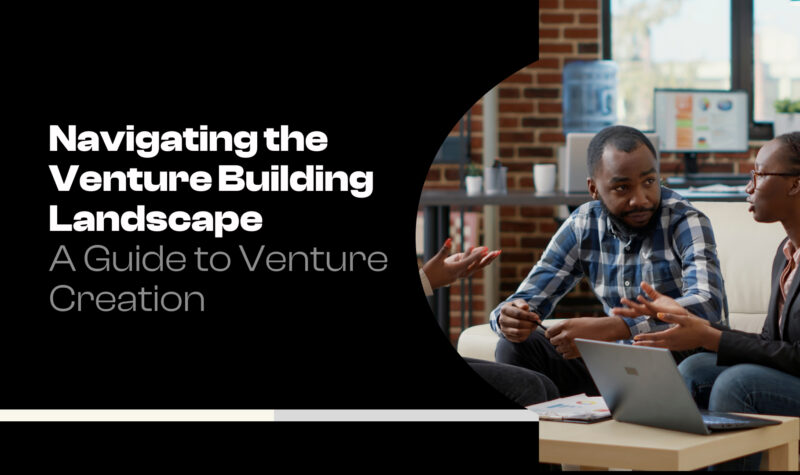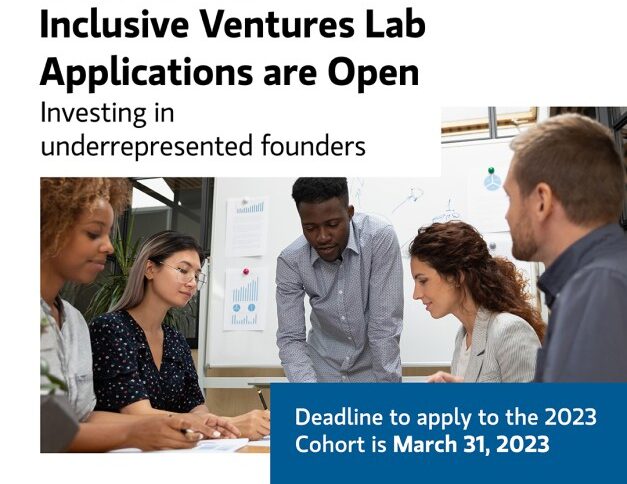Starting a new business venture is an exciting and challenging journey. Early-stage startups often face numerous obstacles and uncertainties, from refining their product or services to securing funding and scaling their operations. Particularly for non-technical entrepreneurs and organizations seeking to carve out a space in the ever-expanding realm of innovation, the journey can seem both exhilarating and daunting. But what if we told you there’s a systematic approach, a blueprint, to transform your visionary ideas into thriving ventures? This systematic approach is not just for tech-savvy pioneers; it’s a beacon for anyone with a passion for innovation.
Venture building is a multifaceted process that encompasses everything from Venture Creation to Venture Operations to Venture Management. In this guide, we’ll demystify the venture creation process from defining your vision and assembling your dream team to securing funding and celebrating those small wins, we’ll navigate the venture creation landscape step by step. Along the way, you’ll discover how a venture studio can be your greatest ally, providing domain expertise, guidance, and a clear roadmap to success.
What is Venture creation? The thrilling initiation of transforming a mere business idea into a tangible, viable entity. Venture creation is a multifaceted process that can be divided into five key phases: Ideation, Validation, Creation, Launch, and Scale (Spin-off). Each phase plays a crucial role in transforming an idea into a successful venture.
Phase 1: Ideation Phase
In the Ideation Phase, you lay the foundation for your venture by establishing a clear vision for the future and a mission that outlines your immediate goals. This phase involves brainstorming creative ideas, assessing their feasibility, and identifying the most promising concepts to pursue. It’s about setting the direction for your venture and articulating the problem you aim to solve. On average, it might take 1 to 3 months to solidify your vision and mission, including initial brainstorming and feasibility assessments.
- Define Your Vision and Mission:
- Establish a long-term vision for your venture, outlining the problem you aim to solve and the impact you want to make.
- Define your mission, setting short-term objectives that align with your vision.
- Idea Generation:
- Generate creative ideas that address market needs or problems.
- Brainstorm potential business concepts and solutions.
- Feasibility Assessment:
- Assess the feasibility of your ideas, considering factors like market demand, competition, and resource availability.
- Identify the most promising concepts to pursue.
Phase 2: Validation Phase
In the Validation Phase, you put your ideas to the test to confirm the existence of demand for your product or service. The Validation Phase typically takes around 3 to 6 months. This includes conducting market research, developing proof of concepts, and gathering feedback from potential users to ensure your idea is well-founded.
- Market Research:
- Conduct thorough market research to validate the demand for your product or service.
- Identify your target audience and understand their needs.
- Proof of Concept (PoC):
- Develop a proof of concept or prototype to demonstrate the feasibility of your idea.
- Gather feedback from early users to refine your concept.
- Business Model Validation:
- Validate your business model, including revenue streams, pricing strategies, and distribution channels.
- Ensure that your venture is financially viable.
Phase 3: Creation Phase
The Creation Phase is where your idea starts taking shape and can span from 6 to 12 months. You create a Minimum Viable Product (MVP) or as we like to call it, your Minimum Lovable Product (MLP), a simplified version of your offering with core features, to gather user feedback and iterate. Building a skilled team and securing funding are also crucial components of this phase. It’s the time when your venture transitions from an idea to a tangible product or service.
- Minimum Viable Product (MVP):
- Develop an MVP—a minimal version of your product or service with core features that your initial adopters will love.
- Use the MVP to gather user feedback and iterate.
- Team Building:
- Assemble a skilled and passionate team that complements your expertise.
- Define roles and responsibilities within the team.
- Funding Strategy:
- Explore funding options, such as bootstrapping, seeking investors, or crowdfunding.
- Secure the necessary capital to proceed with development.
Phase 4: Launch Phase
The Launch Phase is when you prepare for launch and introduce your venture to the market typically takes 3 to 6 months. During this phase, you develop a detailed business plan that outlines your market strategy and financial projections. Legal compliance, branding, and marketing efforts come into play as you build awareness and attract early customers. It’s about making a strong entry and setting the stage for growth.
- Business Plan Development:
- Create a detailed business plan that outlines your market strategy, financial projections, and growth plan.
- Use the plan to guide your venture through its early stages.
- Legal Compliance:
- Address legal and regulatory requirements, such as business registration, permits, and licenses.
- Ensure compliance with industry-specific regulations.
- Branding and Marketing:
- Establish a strong brand identity, including a name, logo, and messaging.
- Develop marketing strategies to build awareness and attract early customers.
Phase 5: Scale (Spin-off) Phase
The Scale (Spin-off) Phase is a long-term endeavor that can span several years. It involves ongoing efforts to scale your venture, explore new markets, and consider exit strategies. The timeline can vary significantly depending on the growth trajectory and goals of your venture.
- Scaling Strategy:
- Plan your venture’s expansion and scaling strategy.
- Explore new markets, distribution channels, and growth opportunities.
- Exit Planning:
- Consider exit strategies, such as acquisition, merger, or going public (IPO), to maximize the value of your venture.
- Evaluate the timing and conditions for an exit.
- Continuous Innovation:
- Foster a culture of innovation within your organization to adapt to changing market dynamics.
- Continuously seek opportunities for improvement and growth.
In conclusion, each phase outlined in this journey of venture creation is undeniably critical in transforming an idea into a thriving venture. While these phases provide a structured roadmap, it’s essential to remember that entrepreneurship is an ever-evolving process. Real-world experiences and challenges will undoubtedly lead to iteration and adaptation.
Moreover, the estimated timelines we’ve discussed are useful reference points, but the actual duration can significantly vary based on numerous factors, including the unique complexity of your venture, the specific dynamics of your industry, and the constantly changing external market conditions.
As you embark on your venture-building journey, always stay mindful of the need for adaptability and flexibility. These qualities, coupled with a relentless commitment to your vision, will serve as the cornerstone of your entrepreneurial success.
ABOUT CEEDLAB
CEEDLAB is a leading innovation and product development lab dedicated to empowering entrepreneurs and innovators on their journey to building remarkable ventures. We provide comprehensive support, from ideation to scaling, helping transform ideas into impactful realities. Learn more about our venture-building expertise and join us in shaping the future of innovation.






